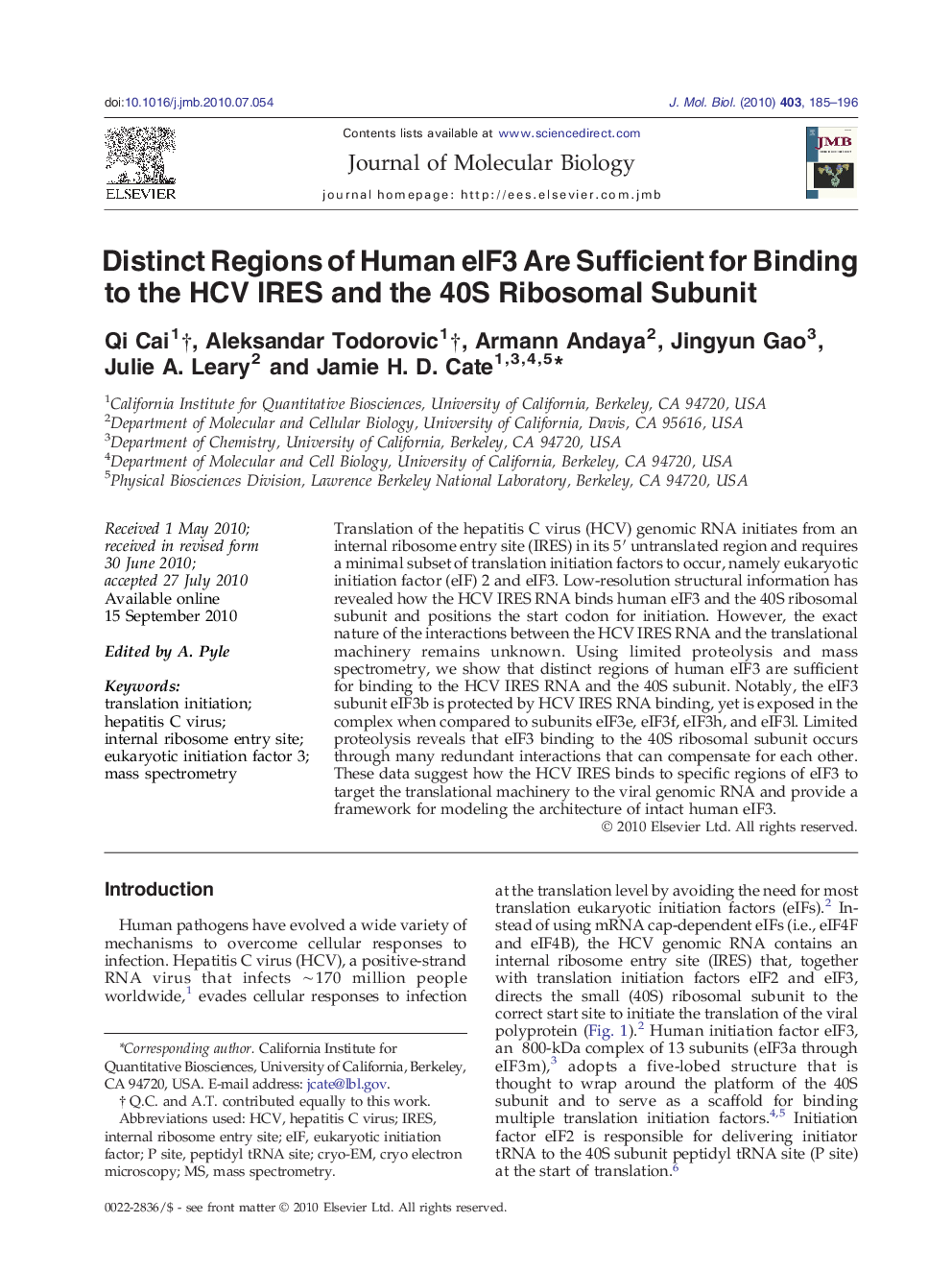| کد مقاله | کد نشریه | سال انتشار | مقاله انگلیسی | نسخه تمام متن |
|---|---|---|---|---|
| 2185747 | 1096006 | 2010 | 12 صفحه PDF | دانلود رایگان |

Translation of the hepatitis C virus (HCV) genomic RNA initiates from an internal ribosome entry site (IRES) in its 5′ untranslated region and requires a minimal subset of translation initiation factors to occur, namely eukaryotic initiation factor (eIF) 2 and eIF3. Low-resolution structural information has revealed how the HCV IRES RNA binds human eIF3 and the 40S ribosomal subunit and positions the start codon for initiation. However, the exact nature of the interactions between the HCV IRES RNA and the translational machinery remains unknown. Using limited proteolysis and mass spectrometry, we show that distinct regions of human eIF3 are sufficient for binding to the HCV IRES RNA and the 40S subunit. Notably, the eIF3 subunit eIF3b is protected by HCV IRES RNA binding, yet is exposed in the complex when compared to subunits eIF3e, eIF3f, eIF3h, and eIF3l. Limited proteolysis reveals that eIF3 binding to the 40S ribosomal subunit occurs through many redundant interactions that can compensate for each other. These data suggest how the HCV IRES binds to specific regions of eIF3 to target the translational machinery to the viral genomic RNA and provide a framework for modeling the architecture of intact human eIF3.
Graphical AbstractFigure optionsDownload high-quality image (106 K)Download as PowerPoint slide
Journal: Journal of Molecular Biology - Volume 403, Issue 2, 22 October 2010, Pages 185–196